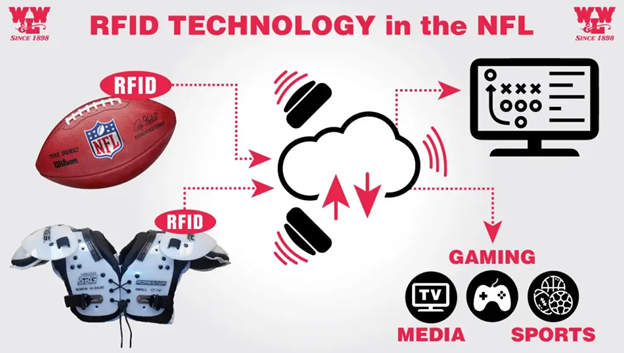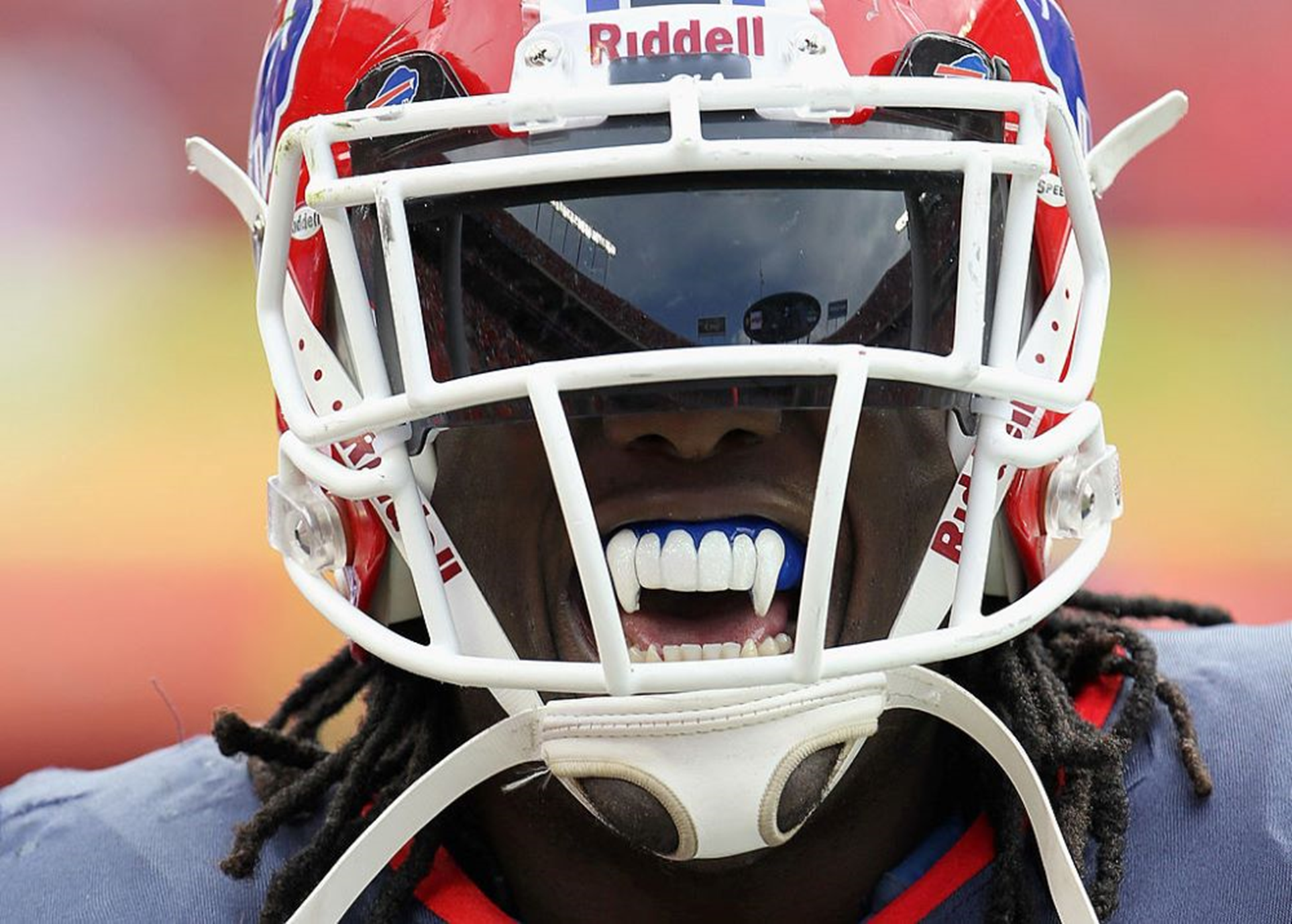 |
| By Karen Riccio |
The NFL season kicks off — with its new kickoff rules — tonight at 8:20 p.m. Eastern.
Then, tomorrow night — yes, a Friday night — the second game is set to be played in Brazil.
But a new season and a new international host aren’t the only new items on the NFL’s plate this year. The league is embracing AI in all sorts of ways.
And some of these offer a ground-floor investment opportunity.
Football’s (Devastating) Wakeup Call
My National Football League fandom stretches back nearly 60 years.
Yet my biggest and ugliest memory came just last year — at the end of the 2022-2023 season.
Late in the season, the Buffalo Bills visited the Cincinnati Bengals for a key Monday night game. That’s when Damar Hamlin, the then 24-year-old Bills’ safety, literally died on the football field.
After making a routine tackle, he tried to get up, staggered, then fell to the ground as his heart stopped beating. Thanks to the medical staff from both teams, Hamlin was resuscitated after about 20 minutes.
I, and millions of others watching the game, couldn’t believe our eyes.
Thankfully, he’s fully recovered now and should start in the Bills’ secondary this weekend. Yet, I still can’t get the image of that moment out of my mind.

According to the NFL Physicians Society, the most common reasons players are forced to leave games are concussions, blunt injuries to the chest such as cardiac contusions, pulmonary contusions, broken ribs, abdominal injuries and kidney injuries.
Orthopedic injuries to the knee, foot, ankle, shoulder, neck and back also happen frequently, as are muscle strains to the hamstrings, quads, calves and abdomen.
It hurts just to talk about it.
So, when I began looking into the impact of AI on the NFL, applications like predictive game analysis, Fantasy Football predictions, better fan experiences, AI-enhanced coaches and officials and smarter fitness, didn’t move my needle.
But using AI to prevent injuries did — a lot.
While I love football as much as the next fan, it’s a sport that has come under scrutiny over the past decade or so for the number of injuries that occur.
Since 2002 alone, the league has made 50 rule changes intended to eliminate potentially dangerous moves and strategies to reduce the risk of injuries.
But more needs to be done.
Thankfully, while you're in the stands watching the game or in the comfort of home, AI is working behind the scenes, crunching millions of numbers every second.
The NFL Enlists AI to Prevent Injuries
Technology has always been a part of football. However, AI adds several degrees of accuracy, speed, analytics and safety to the game.
For example, for the past decade, the NFL has enlisted the help of Zebra Technologies’ (ZBRA) RFID tracking systems. And the partnership was recently extended through the 2025 season.
One of its systems tracks players’ equipment — helmets, shoulder pads, knee braces and cleats — worn during games for use in analytics.

Sensors throughout each NFL stadium track RFID tags placed in equipment, charting players for every play on every inch of the football field.
This tracking technology is an adapted version of Zebra’s industrial tracking devices. They’re typically used in factories to prevent accidents and mistakes.
Introduced in 17 stadiums in 2014, the tracking equipment is now deployed in every stadium in the league.
This marked a quantum leap in the league's ability to capture and analyze on-field action. The RFID system, with its ability to record data at a rate of 10 times per second, paved the way for a deeper understanding of player performances and game trends.
It can also show where the players were positioned during plays that resulted in an injury.
The NFL has also teamed up with the likes of Amazon (AMZN) and its AWS division since 2017 to focus on player safety.
More recently, the NFL has worked closely with the Jeff Bezos-led firm and debuted a joint effort early this year called the Digital Athlete.
Digital Athlete is a platform that leverages AI and machine learning to predict which players are at the highest risk of injury from plays and body positions.
It can create virtual renderings of NFL players. Then, AI-created algorithms run a gazillion simulations of in-game scenarios, trying to understand why injuries occur and if they can be prevented.
The platform draws data from the players’ RFID tags, and 38 5K optical tracking cameras placed around the field capturing 60 frames per second.
During each game week, Digital Athlete processes 6.8 million video frames and documents on 100 million locations and positions of players on the field.
During practices, it processes around 15,000 miles of player tracking data per week — translating to more than 500 million data points.
Finally, the NFL continues to make the prevention of concussions — and long-lasting effects from them — a priority. While the number of concussions rose only slightly from 213 in 2022 to 219 in 2023, progress has stagnated.
That’s why the NFL’s mouthguard sensor program — which launched in 2019 as part of its $60-million commitment to promote safety — is so important.
It has partnered with eight colleges and universities for an ongoing research study to gather data on more than 300 players.
The smart mouthguard, developed by companies like privately owned Prevent Biometrics, are equipped with sensors that monitor impacts to the head.

This data assesses the severity of a hit and determines whether an athlete should be removed from play. These alerts help prevent serious injury.
The NFL calls it a “gamechanger” in potentially identifying many of the 18% of concussions that now come to light only after a game.
The custom fit of the mouthguards that house the sensors is made possible in part by NFL partner Align Technology (ALGN).
Dental professionals use the company’s intraoral scanners to scan participants' teeth to aid in the creation of a personalized mouthguard.
Align worked with all eight universities to facilitate scans for more than 250 participating players.
As the NFL continues to improve on its previous health and safety record, AI will continue playing a big role in identifying injuries, developing treatment plans and — ultimately — preventing them before they happen.
That’s partly why the sports industry (including the NFL) is experiencing rapid growth in AI, with Allied Market Research projecting the market to grow 30% annually from $2.2 billion in 2022 to $29.7 billion in 2032.
So, if you catch tonight’s game, take a minute to think about how you might want to invest in this AI-led future.
Until next time,
Karen Riccio
P.S. We all know Nvidia has led the way in AI so far. But after calling its 30,790% surge, we teamed up with one of America’s top tech minds to uncover the next AI superstar stock. I urge you to grab your seat at the table by clicking here.

